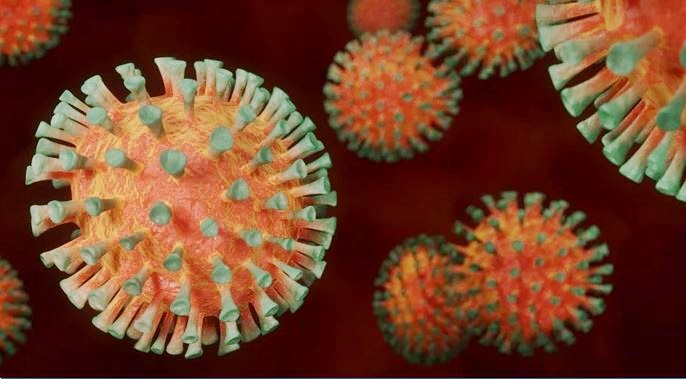UTAH, Dec. 22, 2021 (Gephardt Daily) — The Utah Department of Health on Wednesday reported 11 more documented deaths from COVID-19 and 1,406 new cases since the last report, which was Tuesday.
Total cases in Utah now number 622,414 since the beginning of the pandemic. Of the new cases, 167 were in school-aged children: 72 in children ages 5 through 10, 44 in children ages 1 through 13, and 51 cases in children ages 14 through 17 since Tuesday.
Utah’s known coronavirus deaths now stand at 3,749. The newly confirmed deaths are of:
- A female, not a minor, between 15-24, Utah County resident, unknown if hospitalized at time of death
- A male, between 25-44, Salt Lake County resident, hospitalized at time of death
- A male, between 45-64, Utah County resident, unknown if hospitalized at time of death
- Two females, between 65-84, Washington County residents, hospitalized at time of death
- Two females, between 65-84, Salt Lake County residents, hospitalized at time of death
- A female, between 25-44, Salt Lake County resident, hospitalized at time of death
- A male, older than 85, Utah County resident, long-term care facility resident
- A female, between 25-44, Utah County resident, hospitalized at time of death
- A male, between 65-84, Iron County resident, hospitalized at time of death
Two of these deaths occurred before Dec. 1, UDoH said.
Vaccines
Vaccines given in Utah number 4,465,357, which is 16,694 more than Tuesday.
Vaccinated vs Unvaccinated Risk Ratio:
In the last 28 days, people who are unvaccinated are at 16.4 times greater risk of dying from COVID-19, 9.6 times greater risk of being hospitalized due to COVID-19, and 3.7 times greater risk of testing positive for COVID-19 than vaccinated people.
Since Feb. 1, 2021, people who are unvaccinated are at 6.8 times greater risk of dying from COVID-19, 5.6 times greater risk of being hospitalized due to COVID-19, and 2.5 times greater risk of testing positive for COVID-19 than vaccinated people.
Lab Tests:
UDoH reports 4,163,884 people tested. This is an increase of 10,444 people tested since Tuesday.
It reports 7,635,746 total tests. This is an increase of 20,001 tests since Tuesday.
Trends
The rolling seven-day average for positive tests is 981 per day.
The rolling seven-day average for percent positivity of “people over people” is 11.6%. The rolling seven-day average for percent positivity of “tests over tests” is 8%.
There are 457 people currently hospitalized with COVID-19. Total hospitalizations from the beginning of the outbreak are 27,140.
The department of health is issuing the following statement with today’s numbers.
Omicron is quickly spreading across the U.S. While our public dashboard only shows seven confirmed cases of Omicron, it’s very likely that we have far more cases of Omicron in the state based on what we know about this variant right now. We estimate at least 30% of cases in Utah may now be Omicron, as of Monday, Dec. 20.
This estimate is based on PCR tests conducted at Intermountain Healthcare using the Thermo Fisher TaqPath, a PCR testing platform that detects S gene target failures (SGTFs). SGTFs signal a possible Omicron case at the time a PCR test is conducted. On Dec. 20, among 813 positive tests in Utah, 175 were conducted at Intermountain Healthcare using the Thermo Fisher TaqPath platform. Of these tests, 34% demonstrated SGTF. Only PCR positive samples can be used for whole-genome sequencing to determine variants. The cases reported on our public dashboard only reflect the number of confirmed samples which have completed all steps in the whole-genome sequencing process. There is often a lag between sample collection and genomic sequencing. While there are some other variants with this same characteristic, it’s more likely that we are seeing a rapid rise in Omicron cases.
Our Utah Public Health Laboratory (UPHL) has robust genetic sequencing capabilities and can sequence up to 3,100 samples each week. Due to a mechanical issue, the UPHL was only able to perform a limited amount of sequencing the week of Dec. 13. This problem was addressed this week and we expect to have sequencing results to report this coming Monday.
We are still learning about Omicron. It’s likely we will see more breakthrough cases with Omicron; however, what we know right now, is vaccination and booster shots still offer the best protection against severe illness from COVID-19. The CDC and the UDOH strongly recommend adults 16 and older get booster doses when they are eligible (six months after receiving their Pfizer or Moderna shots, or two months after receiving their Johnson & Johnson shot). To find out where you can get vaccinated, visit https://coronavirus.utah.gov/vaccine-distribution.”
UDoH also reminded Utahns it will not be updating the public dashboard on Friday, Dec. 24 in observance of the Christmas holiday.
The chart below shows Utah’s COVID-19 numbers broken down by area of the state.






